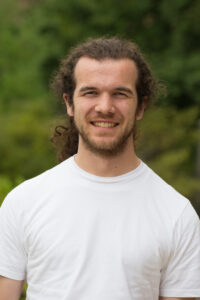
CUOS Seminar | Optics Seminar
CUOS Noon Seminar: QED laser-plasma, Relativistic laser perturbation, and Laser Pulses in the Bubble Regime
This event is free and open to the publicAdd to Google Calendar
Pizza will be served to attendees!
Qian Qian: Spin and polarization-dependent Osiris QED module for the future strong field QED laser-plasma experiment

Abstract: With the rapid development of high-power petawatt class lasers worldwide, exploring the physics in the strong field QED regime will become one of the frontiers for laser-plasma interaction research. Particle-in-cell codes including quantum emission processes are powerful tools for predicting and analyzing future experiments, where the physics of relativistic plasma is strongly affected by strong-field QED processes. Here, we present the development of a full spin and polarization-included QED module based on the particle-in-cell code OSIRIS. In this module, the dynamics of the lepton’s spin involve both the classical spin precession process described by the classical T-BMT equation and the quantum radiation reaction-induced spin transition process. The photon polarization-resolved quantum radiation rate allows us to assign the polarization state for each generated photon in the simulation. We also consider the influence of the lepton spin and photon polarization on the Non-linear Breit-Wheeler pair production process calculation. Compared with state-of-the-art, most common spin/polarization averaged QED modules, this full spin/polarization distinguished quantum module is able to more accurately simulate multi-staged processes like avalanche and shower type electron-positron pair production cascade processes. We also use this module to explore possible routines for generating polarized gamma-ray and lepton bunch through laser-plasma interaction.
This work is supported by the NSF (Award No. 2108075)
Nicholas Ernst: Controllable Electron Injection Using Co-Propagating Laser Pulses in the Bubble Regime

Abstract: We introduce a novel method of controlled electron injection for Laser Wakefield Acceleration (LWFA) operating in the high-intensity “bubble” regime. In this scheme, a fraction of a high-intensity “driver” pulse is diverted and compressed into a low power, few-cycle “satellite” pulse co-propagating alongside the driver. This satellite is tightly focused off-axis where it acts to perturb bubble formation and drive an asymmetric plasma wave before stabilizing on-axis. Doing so allows for manipulation of the particle hamiltonian; creating a trigger to overcome the wave-breaking injection threshold and lead to efficient particle trapping and acceleration. 2D and quasi-3D Particle-in-Cell (PIC) simulations support this concept, demonstrating that systematic investigation of the two-beam parameter space (e.g. temporal delay, beam displacement) leads to controllable variance in the electron beam phase space. Results indicate this method could be used to induce self-injection in wakefields at plasma densities and driving laser intensities well below theoretical predictions. The results show promise for an all-optical route to high charge, mono-energetic particle acceleration to GeV energies or enhancement of electron betatron radiation through independent tuning of the satellite pulse.
Joshua Latham: Relativistic laser perturbation to laser-driven magnetic reconnection
Abstract: Experiments which measure the magnetic fields laser-driven plasmas give insight into the basic processes of plasmas such as magnetic reconnection. These processes become more difficult to describe when there is a mixture between regimes, such as between relativistic kinetic plasma and MHD-describable plasma, as in this case. In this experiment, a 10-ps, 10^19 W/cm^2 laser impinged on the interface between two plasma plumes driven by 2.5 ns, 10^14 W/cm^2 lasers at the OMEGA-EP laser facility. The magnetic fields were measured with proton radiography from a TNSA source. In one regime, the relativistic perturbation inhibited the magnetic reconnection between the two plasma plumes, but with a different timing of the relativistic laser the reconnection may have been enhanced. Probable causes will be discussed. This work is relevant to understanding the physics of reconnection in HED plasmas.
 MENU
MENU 

